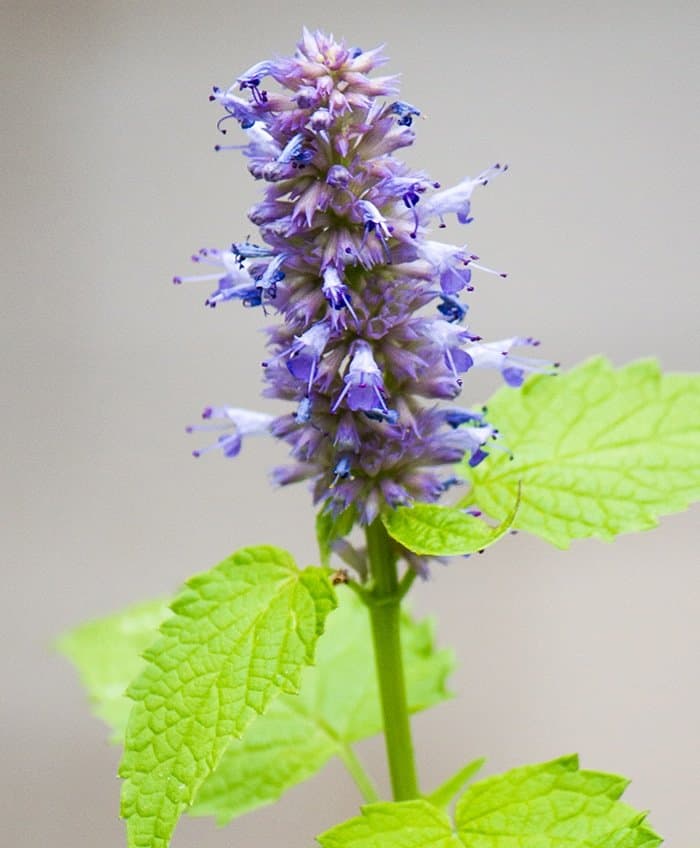
This has been a good summer for the three clumps of anise hyssop (Agastache cvs.) in my front garden. Anise hyssop is a generous producer of potent nectar, and that fits right in with my interest in the honey bees, butterflies, hummingbirds and tiny hover wasps that work so hard pollinating the vegetables, grains and fruits for our table.
I always hear a slight buzz in the garden, but with the presence of anise hyssop, there’s a swift breeze from all that wing activity. My purpose in attracting pollinators isn’t strictly altruistic; I also enjoy watching their enthusiastic hustle and bustle around the blue anise hyssops’ flower spikes. Fortunately, these well-bred pollinators don’t associate with yellow jacket wasps and are unaware of curious spectators. They’re oblivious to me as I get a close look at what’s going on. (I probably appear to them as a passing cloud.)
Anise hyssop is a neat, clump-forming plant (30 x 18 in. / 75 x 45 cm) that sends up multiple stems with terminal flower spikes. I pinch back the stems in late spring to encourage branching, resulting in additional flowering sideshoots. The plants like sun and good drainage, and start to bloom in July and carry on into September. The soft, misty blues of anise hyssop make attractive companion plants for brighter flowers, and I have my three planted near lemon yellow ‘Hyperion’ daylilies and several vivid coneflowers.
Giant hyssop ‘Blue Fortune’ (Agastache ‘Blue Fortune’, Zone 3) has dusty violet florets that appear grey blue from a distance. It would work well with a silver plant like artemisia. The flower buds of ‘Blackadder’ (A. ‘Blackadder’, Zone 7) are almost black when tightly closed, and then open smoky lavender against dark purple wands. This one isn’t frost hardy in my garden so I have it in a container that will go into the garage over winter. My favourite is ‘Golden Jubilee’ (A. rugosa ‘Golden Jubilee’, Zone 6), named for Queen Elizabeth’s jubilee year. It has yellow chartreuse foliage with vivid purple flowers, and makes quite a spectacle when red admiral butterflies are on it. There’s also a ‘Red Fortune’ (A. mexicana ‘Red Fortune’, Zone 3) with dusky plum-red flowers, and I’ll be looking for that one next year.
During daylight hours, the anise hyssop clumps are never without bees and cabbage butterflies working their way up and down the flower spikes. I think their incessant attention is partly due to declining food sources—so many hybrid flowers produce little nectar. In the case of newer coleus cultivars, they might not even produce flowers. What a sad thing it is to deprive pollinators of food; and sadder still, if their absence deprives us of food.

Hi Jodi,
Yes, I’m loving these Agastaches! With the garden so stressed this summer, they’re the only plants looking full and fine. I’d like to find ‘Red Fortune’, the mate to ‘Blue Fortune’. I think these will be cold hardy in my Zone 6a garden. The others will probably go into storage over winter.
— Judith
So glad you posted about this plant, Judith! I love the varieties growing in my garden, including Golden Jubilee, though it’s not as vigourous as I would like. I have ‘Blue Fortune’, too, which does very well.